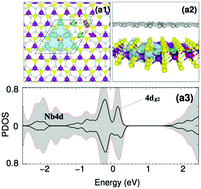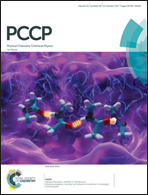Nanodots of transition metal dichalcogenides embedded in MoS2 and MoSe2: first-principles calculations
Abstract
The energetic stability and the electronic properties of nanodots (NDs) composed of transition metal dichalcogenides, XS2 and XSe2 (with X = Mo, W and Nb) embedded in single layer MoS2 and MoSe2 hosts, were investigated based on first-principles calculations. We find that through a suitable combination of the ND and host materials it is possible to control the electron–hole localization. For instance, in NDs of WS2 in the MoS2 host we find the highest occupied (hole) states localized in the ND region, while the lowest unoccupied (electron) states spread out in the MoS2 host. On the other hand, by changing the ND and host materials, the electron states become localized in the MoS2 ND in the WS2 host. Further electronic structure calculations show that the NDs of NbS2 and NbSe2 give rise to a set of spin degenerate empty states within the energy gap of the MoS2 and MoSe2 hosts. The spin degeneracy can be removed by negatively charging the ND system. Such n-type doping was examined by considering a van der Waals (vdW) heterostructure composed of a graphene layer lying on the NbS2 and NbSe2 NDs. Indeed we found a net magnetic moment localized in the ND region.



 Please wait while we load your content...
Please wait while we load your content...